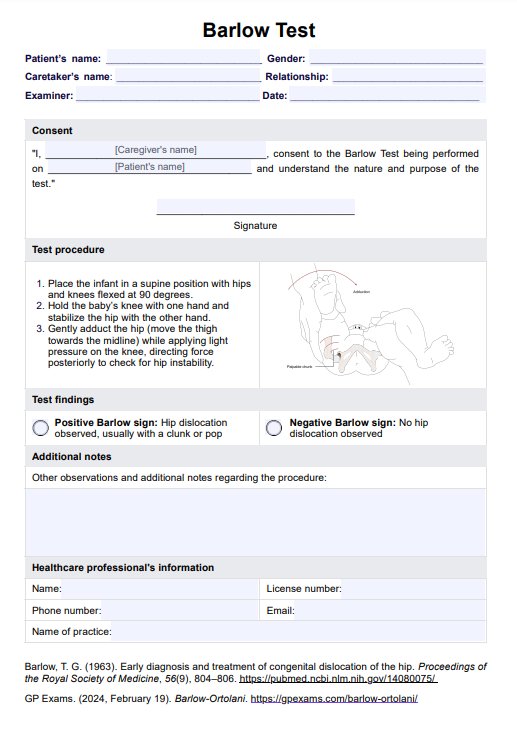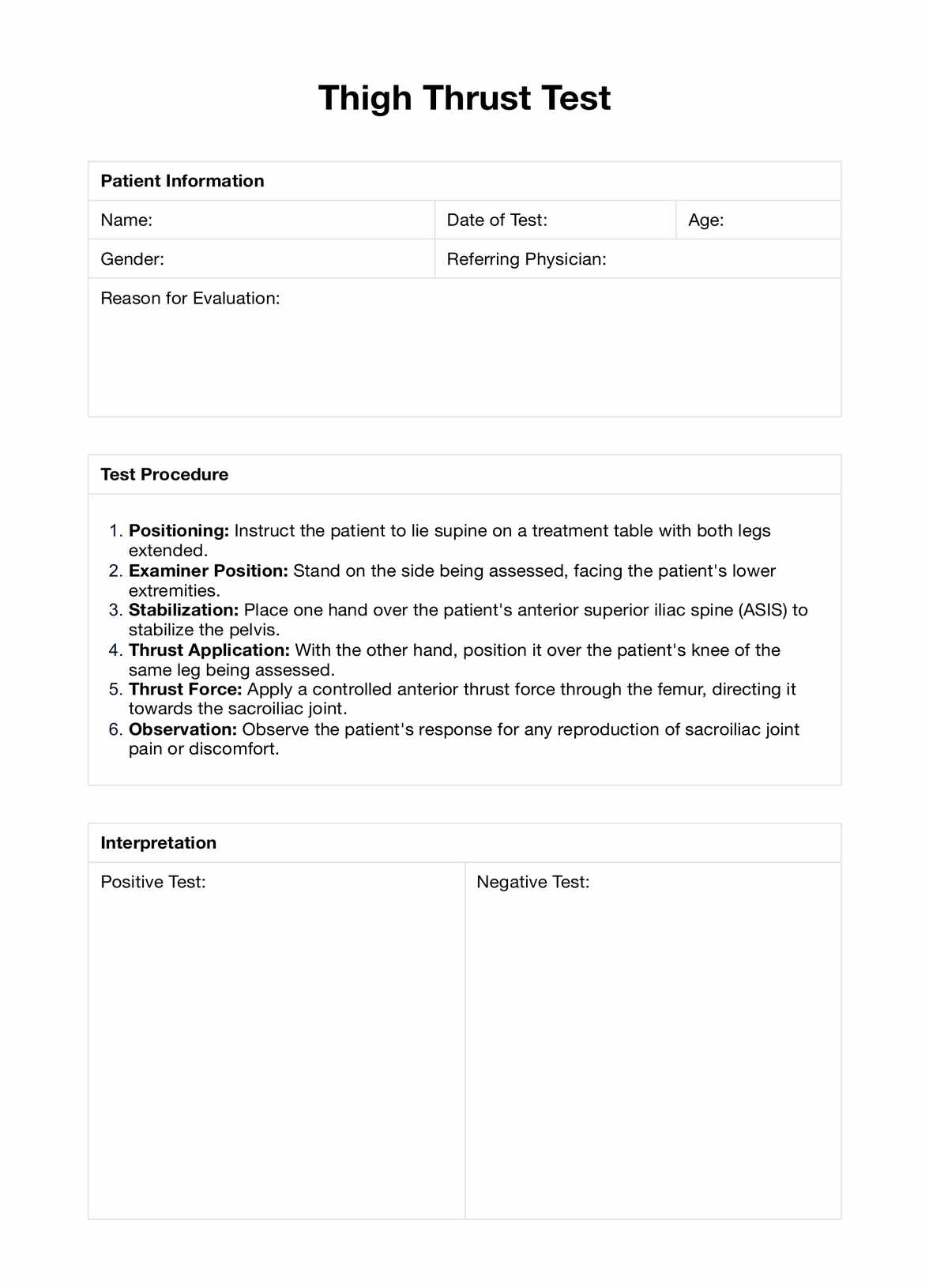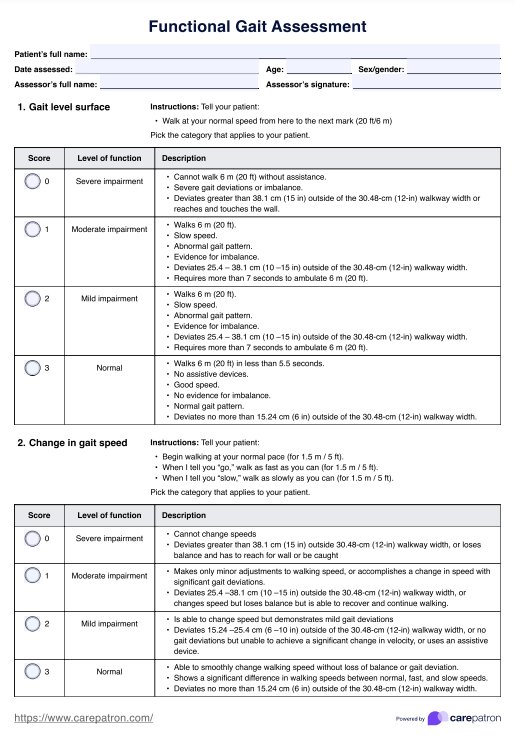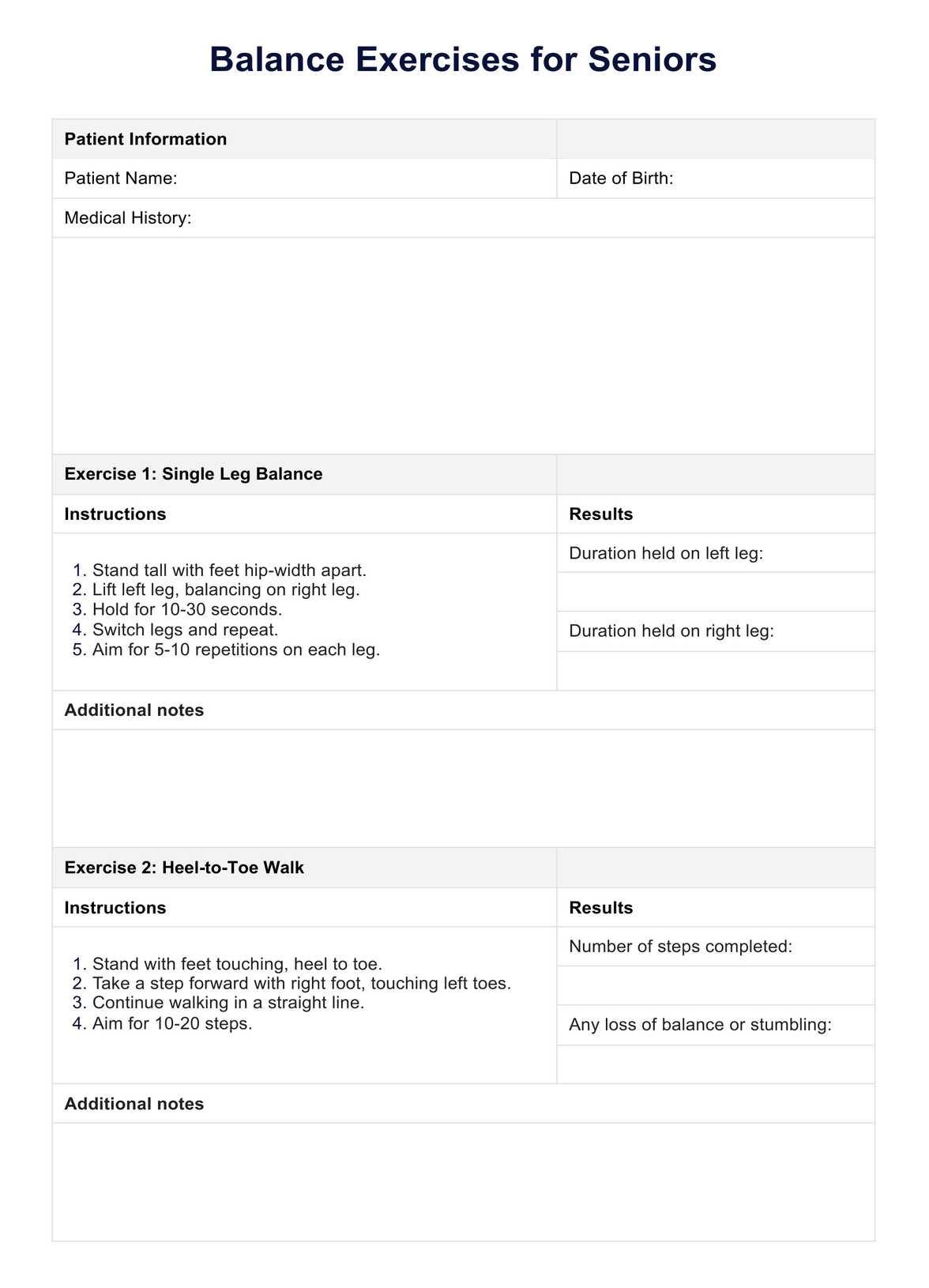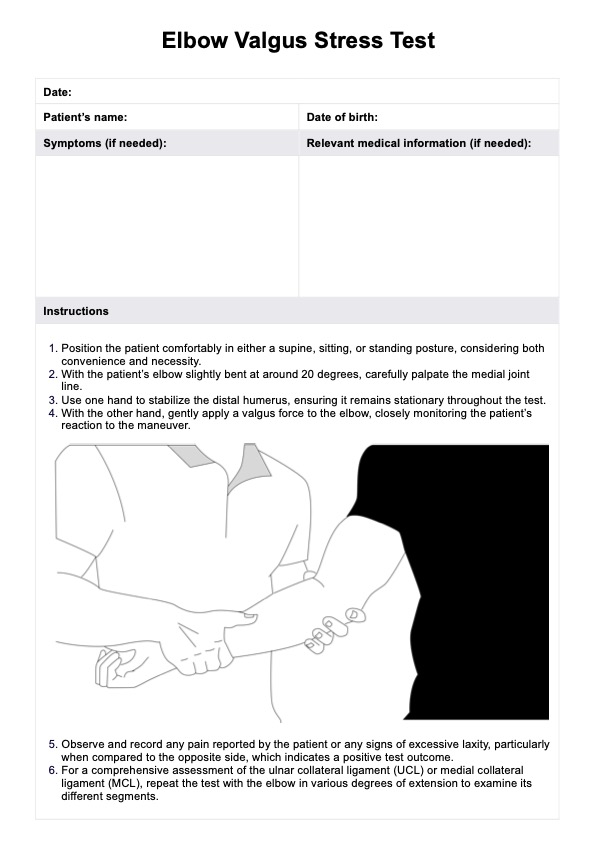Knee Range of Motion Chart
Utilize a knee range of motion chart to assess your patient's knee joint range and capabilities. Click here for a free template copy!


What is range of motion (ROM)?
Range of motion (ROM) is crucial to assessing and understanding the capabilities of the human musculoskeletal system. This term encompasses how much a specific joint or body part can be moved around a joint or a fixed point. ROM assessment plays a pivotal role in various medical and rehabilitative contexts, aiding in the diagnosis, treatment, and monitoring of musculoskeletal conditions.
ROM is categorized into three primary types, each offering distinct insights into the mobility of a joint:
Passive ROM (PROM)
This refers to the range of motion achieved when an external force, such as a therapist or a mechanical device, exclusively induces joint movement. Typically, PROM represents the maximum range of joint motion, providing a baseline for assessing the potential limitations or restrictions in joint mobility.
Active-assisted ROM (AAROM)
In cases where a joint requires partial assistance for movement, an active-assisted range of motion comes into play. This assistance is often necessary when a patient experiences weakness, pain, or alterations in muscle tone. AAROM allows for a more controlled and supported movement, contributing to rehabilitation.
Active ROM (AROM)
Active range of motion involves joint movement achieved through the contraction and relaxation of opposing muscles. For instance, the bending of the elbow or elbow flexion requires the contraction of the biceps while the triceps muscle relaxes. AROM is particularly significant as it reflects an individual's voluntary and functional movement potential without external assistance.
Do note that normal ROM values vary depending on the specific body part and individual characteristics. Individual variations in joint mobility are considered when interpreting ROM assessments, emphasizing the importance of personalized and patient-centered care.
Knee Range of Motion Chart Template
Knee Range of Motion Chart Example
How does this Knee Range of Motion Chart work?
A Knee Range of Motion Chart, knee ROM chart, knee flexion chart and extension chart, is a valuable tool for assessing and tracking the flexibility, strength, and recovery of the knee joint. It helps healthcare professionals, such as physical therapists and doctors, as well as patients, monitor progress over time.
After you prepare the necessary tools like a goniometer - a protractor that measures joint angles -writing materials, and the template, and prepare your patient beforehand by having them sit, stand, or lie down, it's time to record the results on the Knee Range of Motion Chart document. Here's quick overview of how it works and how you can use it:
Step 1: Measure and record the knee range of motion
Using the template as a reference, ask your patient to position themselves to make it easier for you to measure their knee movement range. Then, after aligning and using the goniometer to measure flexion and extension, record the results on the template as well as internal and external rotations. It's best to note the corresponding angles for each measurement and any comments or observations, like feedback on pain and discomfort in the spaces provided.
Step 2: Interpret the results
In addition to any comments or observations during the test, you may note your interpretation of results since it can help track improvement or identify issues. To help you out, typically, the normal range of full extension is 0 degrees, while full flexion is up to 135 degrees.
Step 3: Discuss the findings with the patient
Discuss the findings you wrote down with your patient. You are free to show them the image on the template and your notes so they may better visualize the limitations of their knee range of motion.
Step 4: Track progress and compare
After discussing the template with the patient, remember to store it for future use. You may find your template useful when you need insights before making a decision, adjusting treatment plans, or ensuring the patient is on track for recovery especially after an injury or surgery like a total knee replacement.
What are the normal knee ranges of motion?
Understanding the normal range of motion for the knee is essential in gauging the functional capabilities of this crucial joint, which plays a pivotal role in one’s daily activities. Here's a list of the normal knee ranges of motion depending on the activity:
Walking (approximately 60° flexion)
The act of walking necessitates a specific degree of knee flexion. In a typical gait cycle, one leg requires about 60 degrees of flexion to facilitate smooth and efficient movement. This knee flexion range allows for alternating (full) knee extension and bending, contributing to the dynamic nature of walking.
Sitting comfortably (at least 90°)
For individuals to sit comfortably, the knee joint must flex to at least 90 degrees. This degree of flexion ensures a comfortable and stable seated position, whether in a chair, on a sofa, or during various daily activities that involve sitting.
Sitting cross-legged (approximately 120°)
Engaging in activities like sitting cross-legged demands a greater degree of knee flexion, typically around 120 degrees. This range allows for the flexibility required to adopt this seated posture, commonly seen in various cultural and recreational settings.
Maximum knee flexion (up to approximately 145°)
While the typical ROM for the knee is up to 135 degrees, many individuals can achieve even greater flexion, reaching up to approximately 145 degrees. This extended range provides a margin of flexibility that accommodates a variety of movements and positions beyond what is necessary for routine activities.
What causes a limited range of motion?
Limited range of motion in the knee can significantly hinder daily activities, affecting the quality of life for individuals facing this challenge. Various conditions contribute to restricted knee mobility (e.g., knee injury, excess body weight, muscle tightness), each with distinct characteristics and implications. Understanding the underlying causes is crucial for effective diagnosis and the development of targeted interventions.
Here are some common factors associated with limited knee ROM:
Osteoarthritis
This degenerative joint disease is a prominent contributor to limited knee range of motion. Osteoarthritis results in joint space narrowing, the formation of osteophytes (bone spurs), and erosion of cartilage. These changes lead to pain, stiffness, and diminished mobility, impacting the overall functionality of individual joints.
Meniscal tears
Injuries to the menisci, particularly in the medial or lateral knee menisci, can result in a limited range of knee motion. Such tears may occur due to trauma or degenerative changes. Meniscal tears contribute to pain, swelling, and instability, affecting the knee's ability to move freely.
Autoimmune conditions
Rheumatoid arthritis and psoriatic arthritis, both autoimmune conditions, are associated with limited knee range of motion. These conditions involve cartilage breakdown and joint inflammation, leading to pain, stiffness, and reduced mobility. Managing the underlying autoimmune response is essential in addressing the associated limitations in knee ROM.
Patellofemoral disorders
A spectrum of conditions falls under patellofemoral disorders, causing limited knee range of motion. Examples include patellofemoral pain syndrome, patellar tendinitis, and patellar instability. These disorders often result in pain, instability, and restrictions in joint movement.
Traumatic injuries
Injuries such as ligamentous sprains, meniscal tears, or fractures can lead to limited knee range of motion. Traumatic events can cause pain, swelling, and instability, all of which contribute to reduced joint movement. Effective management of these injuries is crucial for restoring optimal knee function.
How to increase the range of motion?
Many individuals seek to enhance mobility and functionality by improving their knee range of motion (ROM). Various methods can contribute to increased knee ROM, offering a spectrum of approaches that cater to different needs and preferences.
Here's a list of several effective strategies to consider:
- Physical therapy: Through targeted exercises and stretches in physical therapy based on an assessment by a physical therapist of the patient's current range of motions and specific limitations, individuals can gradually increase knee mobility while ensuring proper form and safety.
- Regular knee exercises: Specific exercises, such as heel slides, quad stretches, knee bends, and quad activators, can be particularly effective in targeting the leg muscles and structures around the knee joint. Consistent practice of these exercises contributes to improved overall knee function and increased ROM.
- Stretches: A variety of stretches can be incorporated into a routine to target the improvement of knee ROM specifically. Seated scoots and knee-to-chest stretches using a chair, as well as wall stretches and heel slides performed while lying on the floor, can effectively contribute to increased flexibility.
- Joint mobilization: Incorporating joint mobilization, a form of manual therapy, into a rehabilitation plan can be beneficial in increasing knee ROM. This technique involves skilled hands-on movements by a healthcare professional to address joint stiffness and restrictions.
- Knee surgery: In certain cases where conservative methods prove insufficient, surgical intervention may be considered to increase knee ROM. Healthcare providers may recommend surgical procedures, such as arthroscopic surgery or joint manipulation under anesthesia, to address specific structural issues hindering optimal knee mobility.
Commonly asked questions
You can use the knee range of motion chart template as a document where you can record results from your assessments or examinations.
Orthopedists and orthopedic surgeons are the ones who will benefit the most from using the knee range of motion chart template.
Having a normal range of motion in the knee is important to perform daily activities such as walking or climbing stairs without difficulty or limitations.


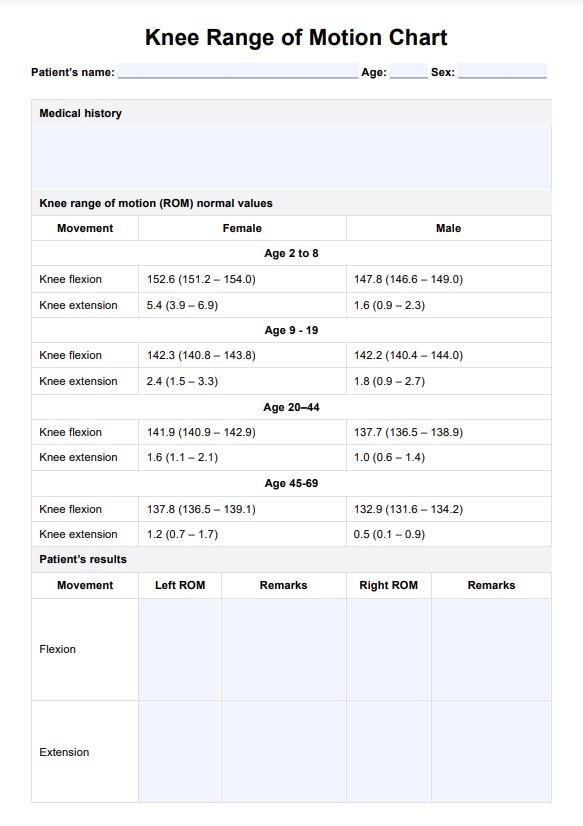
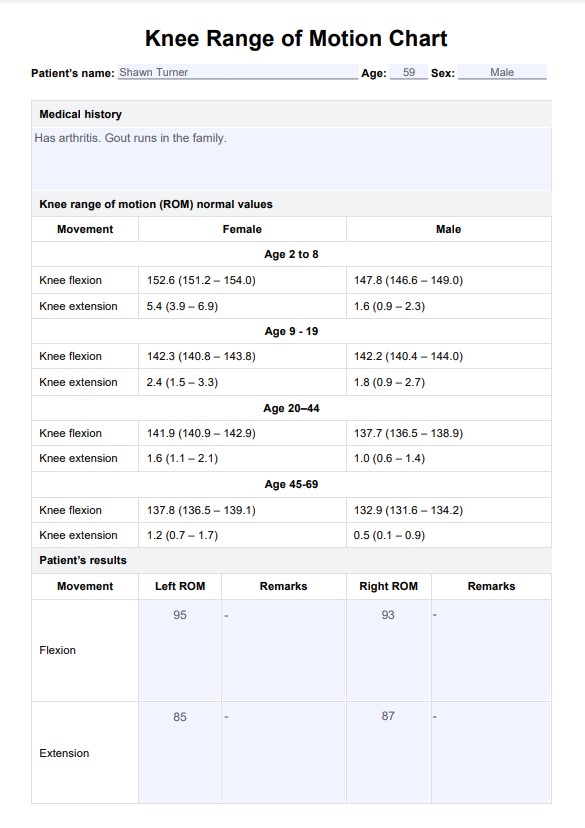

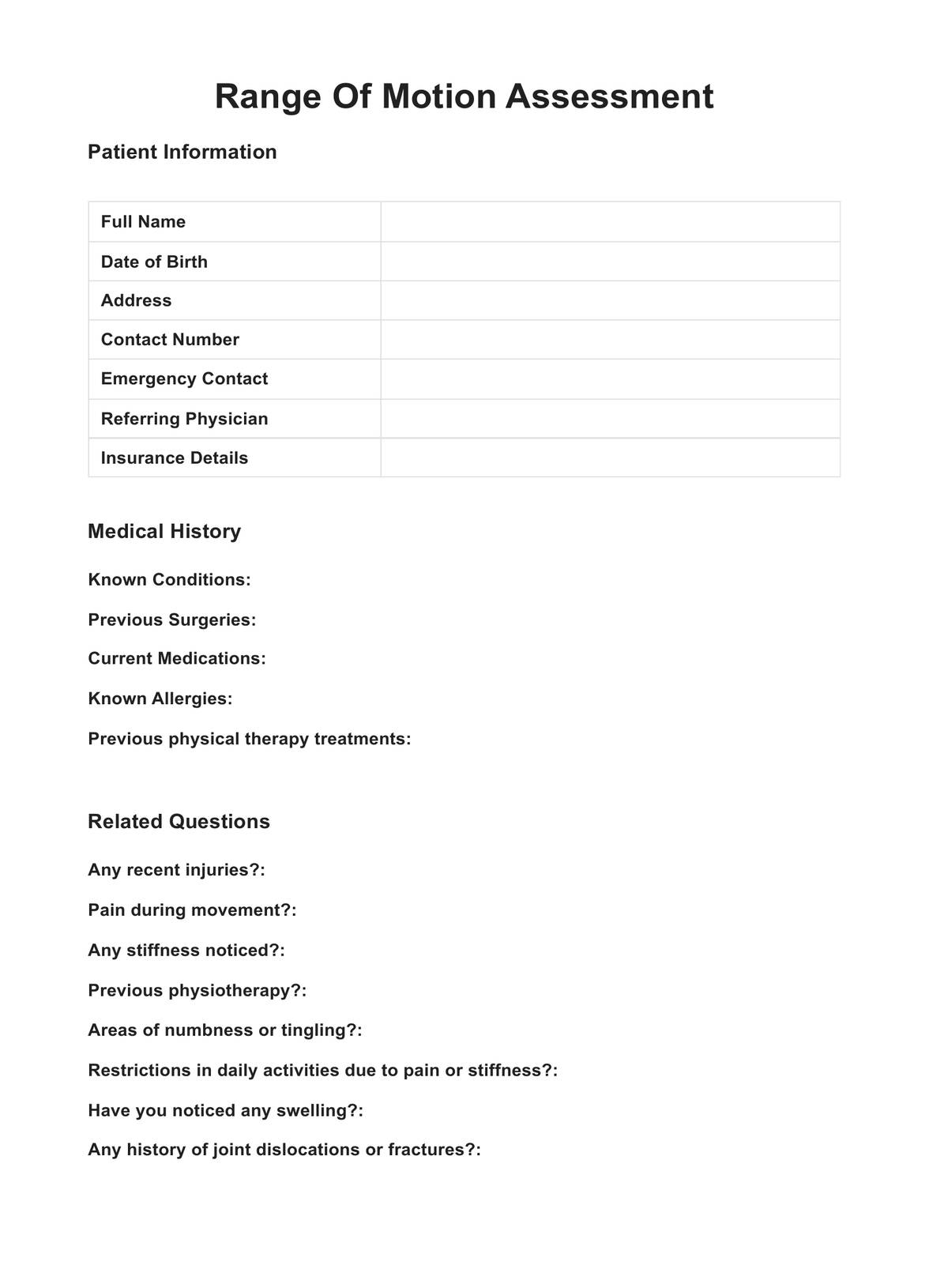
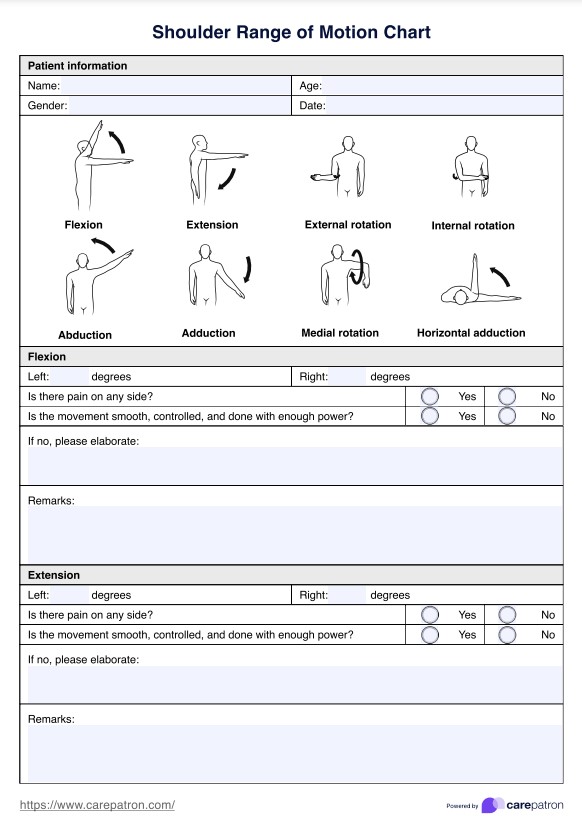
















-template.jpg)


















































































